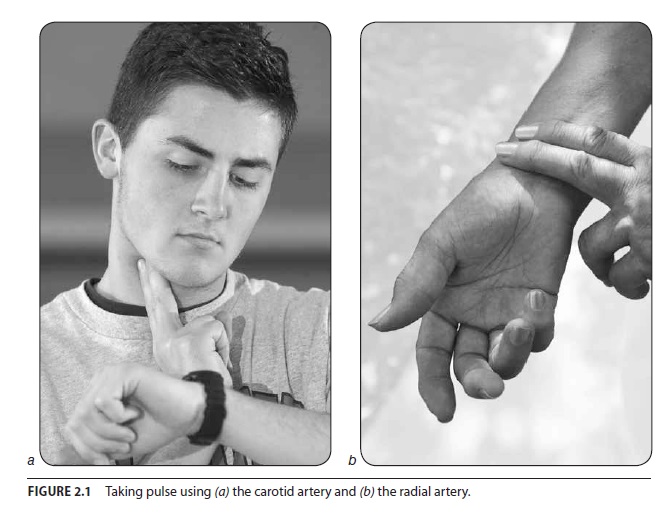 Long before the tools to listen to and measure heart rate were available, medical professionals were paying attention to the beat of the heart. In fact, the way the heart beats (fast or slow, regular or irregular) is so important that it is one of the things doctors almost always check during medical exams. Basically, there are two methods of measuring heart rate: manually (with the fingers), which is commonly called palpation or taking your pulse, or mechanically (with a device such as a heart rate monitor). Manual palpation involves feeling your pulse by applying pressure near an artery. This is different from measuring the electrical signal of the heart, which is what a heart rate monitor does. Manual palpation measures the biomechanical heart signal, whereas heart rate monitors measure the electrical heart signal. Although you might expect the heart rate and pulse rate to be identical, this is not always true. Heart rate refers to the electrical impulses that cause the heart to beat; pulse, or pulse rate, refers to the movement of blood through the arteries. Because many things can interfere with blood flow at or before the site of palpation, it stands to reason that the greater the distance between the heart and the palpation site, the greater the chance of error. Human error (e.g., miscounting the pulse) is also common when measuring pulse. In fact, in one study, subjects monitoring their pulse by palpation got readings that averaged 17 beats per minute (bpm) lower than the readings taken at the same time with a heart rate monitor.
Long before the tools to listen to and measure heart rate were available, medical professionals were paying attention to the beat of the heart. In fact, the way the heart beats (fast or slow, regular or irregular) is so important that it is one of the things doctors almost always check during medical exams. Basically, there are two methods of measuring heart rate: manually (with the fingers), which is commonly called palpation or taking your pulse, or mechanically (with a device such as a heart rate monitor). Manual palpation involves feeling your pulse by applying pressure near an artery. This is different from measuring the electrical signal of the heart, which is what a heart rate monitor does. Manual palpation measures the biomechanical heart signal, whereas heart rate monitors measure the electrical heart signal. Although you might expect the heart rate and pulse rate to be identical, this is not always true. Heart rate refers to the electrical impulses that cause the heart to beat; pulse, or pulse rate, refers to the movement of blood through the arteries. Because many things can interfere with blood flow at or before the site of palpation, it stands to reason that the greater the distance between the heart and the palpation site, the greater the chance of error. Human error (e.g., miscounting the pulse) is also common when measuring pulse. In fact, in one study, subjects monitoring their pulse by palpation got readings that averaged 17 beats per minute (bpm) lower than the readings taken at the same time with a heart rate monitor.
Note: Both pulse and heart rate can differ greatly among two people of the same age. This is the result of a combination of genetic and fitness factors.
Although 16 possible palpation sites exist, the most common places to monitor pulse are at the carotid artery (at the neck) and at the radial artery (at the wrist) (see figure 2.1).
- At the carotid artery: Have students place two fingers lightly on the side of the neck just below the chin. Note: When students are taking a carotid pulse, warn them against exerting too much pressure against the artery. Too much pressure at that point can stimulate the vagus nerve, which may cause them to faint.
- At the radial artery on the wrist: Have students place two fingers lightly on the inside of either wrist below the thumb.

Figure 2.1 Taking pulse using (a) the carotid artery and (b) the radial artery.

Leave a Reply